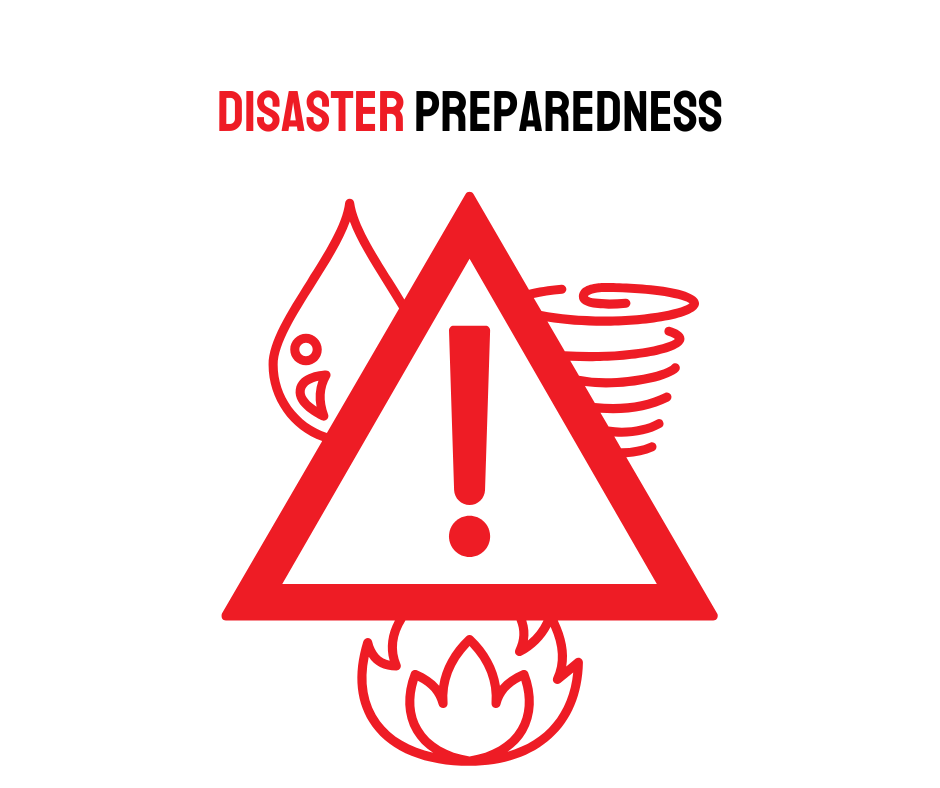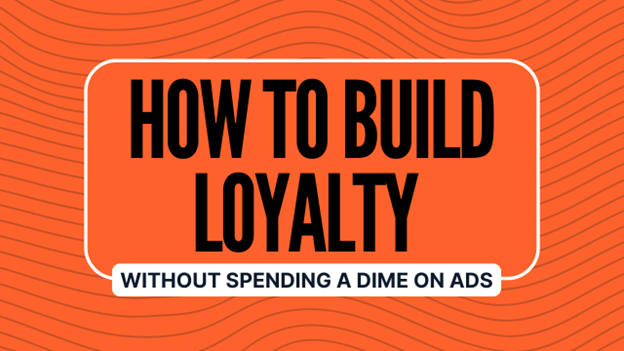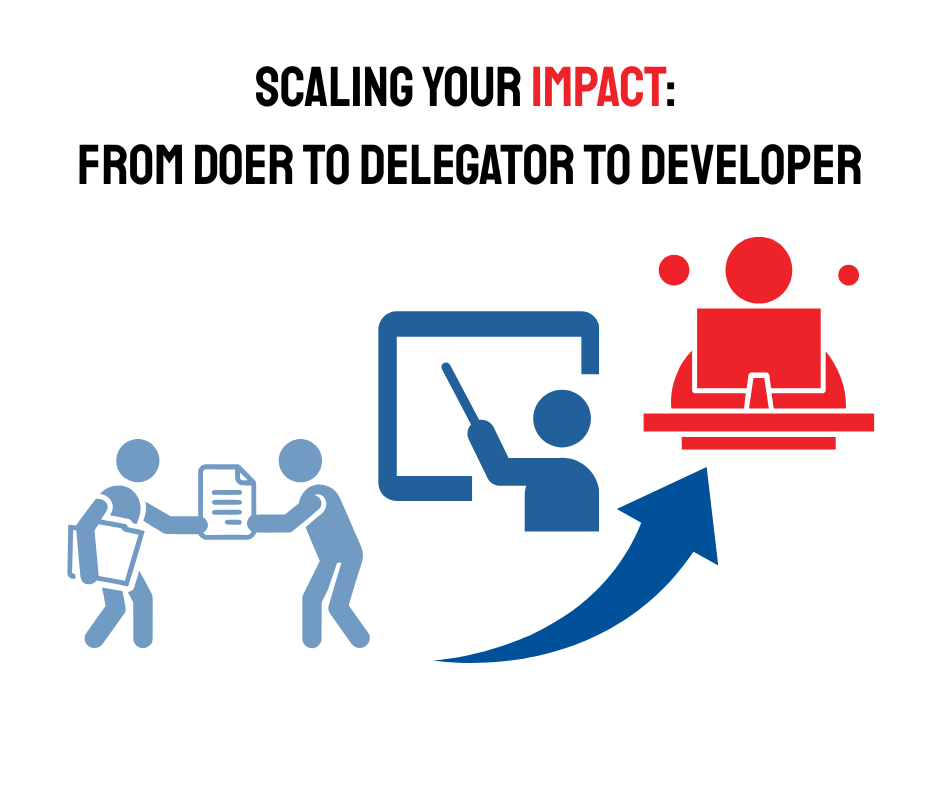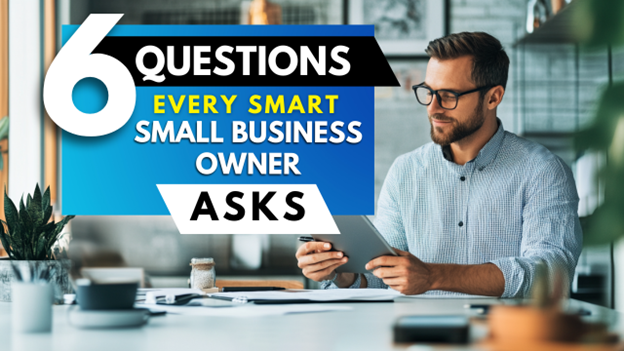Search results for 'planning' (54)

Even with concerns about the economy being on every newscaster’s lead story, the holidays haven’t been cancelled. Your customers are still planning to celebrate. The question is not “Will they spend?” It is “Where, how, and with whom?” Here is the good news: national forecasts say 2025 holiday retail sales are expected to top 1 trillion dollars for the first time, with overall growth around 3.7% to 4.2% over last year. Online spending alone is projected to hit roughly $253 billion , up more than 5% from 2024. Here is the tension: despite those industry predictions, individual shoppers say they plan to cut their own holiday spending by about 10%, mostly because of higher everyday costs. They still want to honor traditions, but they are trimming extras and searching for real value in every dollar. While it may not always feel like it, there is plenty of money moving through the season. But it won’t land with businesses that look generic or transactional. It will go to the places that feel worth it. So what can you do to be recognized as one of “those places”? You need to show value and create memorable experiences to attract your community’s dollars right back into local storefronts. You can do this by: 1. Sell Solutions, Not “Stuff” When people feel financially tight, they become laser-focused on solving gift-giving challenges. Reframe your offers around that instinct. Create named bundles that solve a specific holiday headache “Holiday Hosting Rescue Kit,” “Teacher Gift in a Bag,” “Self-Care Sunday Set,” “New Year Refresh Box.” Put everything they need together, price it clearly, and show the “compare if you bought separately” value. Build “good / better / best” options Give three price points for your most popular services or gift sets so people can stay on budget without walking away altogether. Put the value in writing Use shelf talkers, cards, or social posts to explain why something is a smart buy: durability, local sourcing, free refills, included follow-up, or time saved. Make the math visible. 2. Turn Your Space into a Mini Holiday Experience If customers can get the same item online, your edge is the experience. It does not have to be expensive or elaborate to be memorable. Try a few of these: “Five-Minute Reset” station Offer a quick chair massage, essential oil hand rub, hot cider sample, skincare mini consult, or stretching corner. Market it as “your five-minute break from the chaos” to draw them in. Wrapping or personalization bar Offer free or low-cost gift wrapping, hand-lettered tags, simple engraving, or custom notes. Offer an upsell with festive ornaments and ribbon on the packages. Partner with another local creative if you do not have staff capacity. Micro events that do not overwhelm your team Think 60–90 minute happenings: · “Bring Your List” shopping night with one-on-one gift suggestions · “Ask the Expert” Q&A for holiday makeup, tech setup, or wellness · Kids craft corner so parents can shop in peace 3. Collaborate so Your Offers Feel Bigger Than Your Budget In a cautious economy, partnerships are one of your strongest tools. They expand your reach without expanding your costs. Try sharing your spotlight. Feature each other on social with quick “If you are here, also check out…” reels or posts. Tag the chamber so they can amplify. Customers see a thriving, interconnected local scene, not isolated businesses struggling alone. You can accomplish a similar boost by creating a list of your favorite holiday things in town including businesses and events you love or create a video of “Here’s where I plan on doing my holiday shopping” and share why. 4. Help Customers Feel Like Financial Grown-Ups, Not Guilty Spenders This year, people are highly aware of prices and tired of surprise bills. If you help them feel in control, they will trust you more. Promote “planned generosity,” not impulse splurging Run early “Plan Ahead & Save” weeks where shoppers who bring a list or spend over a certain amount can lock in gift-wrapping, free add-ons, or January discounts. Make it about smart planning, not scarcity panic. Offer clear, fair payment options If it fits your business, consider buy-now-pay-later, deposits on larger services, or simple payment plans. Be transparent about terms. Position it as budget-friendly, not pressure. If you can, eliminate the credit card usage upcharge that businesses are implementing today. No one feels good about paying your credit card fees, especially when they spend a lot of money. If you can’t eliminate them, remarket them. Instead of saying “there’s a 3% convenience fee for using your credit card, have the price tag reflect the credit card price and give cash users a discount. Don’t penalize people for using a card. Incentivize them to use cash. Teach tiny money wins Content is powerful here. Short posts, emails, or in-store signs like “Three gifts under $30 that still feel luxe,” or “How to build a skincare routine under $75” prove you are on your customers’ side. Don’t make customers think about value. Point it out to them. 5. Use Digital Tools to Capture Online Spend, Not Compete With It With online holiday spending expected to grow over 5%, you do not have to beat the big players. You need to meet your customers where they already scroll and shop. Make it easy to buy from you without coming in Even a simple “DM to purchase,” online invoice, or quick checkout link is better than “Call the store.” Turn experiences into content Film your “Five-Minute Reset,” passport events, or behind-the-scenes prep for short reels. Show your inventory on a reel. Add clear “Here is how to get this” instructions in the caption. Feature value loud and clear Pin posts that show your bundles, your warranties or guarantees, your local impact, and your limited-time perks. People are scrolling quickly. Make the “why you” obvious. Don’t worry about a gloomy economy. It won’t cancel the holidays but it does force you to be sharper, more creative, and more community-minded. If you can show value, design small but meaningful experiences, and work together, your business will not just survive the season. It will become part of how your neighbors remember it.
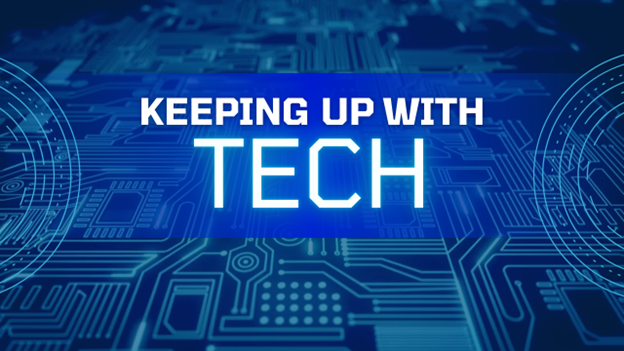
If you’re a busy professional, “keeping up with tech” can feel like a second full-time job you did not apply for. New tools launch daily. Your inbox is full of “game-changing” software. Meanwhile, you still have customers to serve, a team to lead, and probably at least 47 open browser tabs. Right? While there’s enormous pressure to keep up with innovation these days (it’ll make you more efficient), you can’t be on top of everything. And you don’t need to be. You just need a simple system that keeps you informed about the right things, so you can make smart, confident decisions to reach maximum efficiency without losing your mind (or your evenings). Start by Shrinking What “Tech” Means “Tech” is a massive category. If you treat all of it as equally important, you will burn out and do nothing. Instead, filter what you pay attention to through three questions: Will this help me grow revenue? Things that fall into this category include: better customer relationship tools, email marketing, online booking, e-commerce, paid ads, social scheduling. Will this save time or reduce friction? Things that fall into this category include: automation, project management, AI assistants, e-signatures, online forms, scheduling apps. Will this reduce risk? Things that fall into this category include: cybersecurity basics, password managers, backup systems, compliance tools. If a new technology does not hit at least one of those, it goes into the “interesting, but not for me right now” pile. You acknowledge it, you do not adopt it. Build a Tiny “Tech Intel” Ritual Keeping up with tech should not be an endless scroll. Otherwise, it becomes much like the empty promises you make to yourself of “one more reel, then back to work.” Treat it like you would your financials or strategy. Give it a container. Once a week, block out fifteen minutes on your calendar and label it “Tech Check In.” That becomes your standing appointment to look up, not just grind through. During that time, you are not randomly Googling. You are returning to a small set of trusted sources you have already chosen. Which brings us to your next move. Making the most of your time means having the learning materials at your disposal when you’re ready to review them. But ensure you keep this appointment with yourself. Otherwise, things stack up and you end up deleting them and not learning anything. Let a Few Smart People Review Things for You You do not need to read everything. You need to follow a few people who already do. Pick two or three “filters” you like, such as a newsletter that reviews tools for small businesses or your specific industry, a YouTube channel that breaks down tools and trends in simple language, or a podcast that recaps what actually matters each week. The humans behind these channels are doing the heavy lifting so you don’t have to. Your job is not to chase every link they share. Your job is to skim their summaries and ask a simple question: Could this help our revenue, our time, or our risk in the next 6 to 12 months? Again, schedule the time to actually read or listen. Subscribing is not the same as using it. During your Tech Check In, spend those fifteen minutes with their recap instead of random scrolling. Find a “Guru” Who Speaks Your Language It also helps to have one or two “gurus” you follow consistently. Not the loudest tech celebrity shouting about the future, but someone who translates tools for real-world businesses. Look for people who work with companies roughly your size, explain things in plain language, focus on outcomes and use cases (not just features), and share honest pros and cons instead of hype. You can find them by asking peers who they follow, noticing which experts show up again and again on business podcasts you like, or searching phrases like “small business tech review,” “tools for [your industry],” or “non techie tech tips.” When you find a voice that feels grounded and practical, stick with them. Consistency beats chasing a new expert every month. Let AI Be Your Research Assistant You do not have to read every two-thousand-word review to get the point. This is where AI can quietly make your life easier. You can copy an article into an AI tool and ask it to summarize the key takeaways for a small business owner and flag any obvious risks. You can paste a software homepage and ask what the product actually does, who it is best for, and whether it is overkill for a business with fewer than twenty employees. You can ask for a simple comparison between two tools you are considering. You can even create your own GPT that you train on your business and talk to it about how those products may or may not be a good fit for you. The goal is not to become a technician or a tech consultant. Instead, you want to quickly understand whether something is worth a deeper look. Use Your Network as a Shortcut You are not the only one trying to sort this out. Other people are already testing things. Borrow that. At your next networking event, ask one question that cuts to the chase: “Is there any app or software you started using this year that you now swear by?” Inside your own organization, invite more tech-comfortable team members to do short “show and tell” sessions. Ten minutes, one tool, one way it saves them time. And do not forget your chamber. Many already host tech focused webinars, workshops, or lunch-and-learns that are curated for small businesses. That curation is half the value. Experiment. Do Not Overhaul Everything. The fastest way to stall on technology is to decide you need a giant digital transformation before you do anything. You do not. You need small, low-risk experiments. Start with a single problem: missed appointments, slow invoicing, messy lead follow up, repetitive manual tasks. Choose one tool that might help, ideally with a free trial or month-to-month plan. Decide what success would look like. Fewer no-shows. Faster payment. Less time spent on a tedious process. Run a 30-to-90-day test with one team or one process, then choose to keep it, switch it, or drop it. That is it. No epic overhaul. Just repeated, thoughtful experiments. Park the Shiny Objects on a “Not Now” List You will see plenty of tools that look cool but are not right for this season in your business. Instead of feeling guilty for not jumping in, create a simple “Not Now” list. It can be a note in your phone or on Notion (it’s a cool app), a page in your planner, or a shared document. Any time you hear about something promising that is not urgent, park it there with a short note like “future CRM upgrade” or “AI chatbot to explore next year.” When you plan your quarterly or annual priorities, you can revisit that list and choose one or two to evaluate. You are not saying “never.” You are saying “not right this minute.” You Are Aiming for Literacy, Not Perfection You are not trying to become a tech expert. You are becoming a tech-literate decision maker . That looks like this: You understand, at a high level, what matters and what does not. You stay curious in small, consistent doses. You test tools in bite-sized ways. You keep the focus on how technology supports people, not the other way around. If you put even a light system around how you track and test new tools, you will be far ahead of businesses that only react when a trend goes viral. You do not need every new app. You need the right few that make your work smoother, your customers happier, and your business more resilient. That is what “keeping up with tech” looks like when you have an actual life. Read More: 15 Tech Tools to Elevate Your Work-Life Balance How to Make Time for Innovation Maximizing Efficiency: Tools and Techniques to Boost Team Productivity ----------------- Christina Metcalf is a writer and women’s speaker who believes in the power of story. She works with small businesses, chambers of commerce, and business professionals who want to make an impression and grow a loyal customer/member base. She is the author of The Glinda Principle , rediscovering the magic within. _______________________________________ Medium: @christinametcalf Facebook: @tellyourstorygetemtalking Instagram: @christinametcalfauthor LinkedIn: @christinagsmith

We’re fast approaching the time of year where it can like you’re running a marathon on a tightrope. Customers need attention. Promotions are queued up to be launched (or designed). Your inventory is giving you nightmares and you have huge goals for the end of the year. And you’re supposed to stay cheerful, strategic, and somehow well-rested through it all. But the problem isn’t your big aspirations for 2026, nor does the problem lie in trying to solve the things you can’t control. It’s your habits. James Clear’s Atomic Habits reminds us that meaningful results come from the small, repeatable choices we make every day. During the holidays, those tiny decisions are the difference between burnout and breakthrough. When you build systems that work even when you’re tired, distracted, or knee-deep in ribbon, the season gets lighter and your business gets stronger. Here’s how to apply some of Clear’s most practical ideas to help you not just survive the holiday season, but launch into January with invincible momentum. Start with a 1% Mindset One percent doesn’t sound like much until you stack it day after day. You don’t have to reinvent your business. You don’t need a perfect storefront, flawless offers, or an Instagram grid that looks like a lifestyle magazine. Instead, choose one area to improve just slightly. Take that one small step toward your goal. Maybe it’s tightening up your email promo schedule. Maybe it’s creating a smoother checkout flow. Maybe it’s something as simple as promising yourself (and following through on) a good night’s rest for the next month. Small refinements reduce stress and increase sales. They also remind you that progress is happening, even in chaos. Re-design Your Environment Clear says our surroundings often shape our behavior more than our motivation does. This is especially true during the holidays when the pace is high and attention is scattered. Look around your space with strategic eyes. If your workspace feels cluttered, simplify it. If your best seasonal products aren’t visible at first glance, elevate them. If your team keeps losing pens, square readers, bags, or bows, create a “holiday command center” with everything in one place. Tiny environmental shifts create smoother systems. And smoother systems prevent those frantic moments when you’re internally screaming, “Where did we put the gift bags?!” Build Habits That Support Your Busiest Days The season is unpredictable, so anchor your day with predictable habits. A few anchors to consider: • A 5-minute morning reset, before opening or seeing clients • A quick end-of-day review: what sold, what slowed down, what needs restocking, what got clicks, what impact on our customers did we see? • A customer-touch habit: one message, one email, or one thank-you note daily • A “two-minute tidy” before leaving (your future self will adore you) Consistency creates stability. When everything else feels like holiday improv, these anchors act like rhythm lines on the page. Use Systems, not Willpower If you remember nothing else from this article…pay attention… Willpower gets weaker when you get tired. Systems don’t. If you want to post consistently on social media, schedule a week’s worth of content on one calmer afternoon. If you want to upsell a holiday special, script one clear line for every team member. If you want to stay on top of inventory, set an alarm that reminds you to check key items before the weekend rush. During the holidays, systems carry you when energy can’t. Make Good Habits Easy and Bad Habits Harder Clear’s “make it obvious, make it attractive, make it easy, make it satisfying” formula is your season’s secret weapon. Want your team to use the upsell script? Keep it taped near the register or near each desk. Want customers to sign up for your loyalty program? Put the QR code where people naturally pause and that can be more than one spot. Want to stop scrolling between transactions? Keep your phone in a drawer. Design beats discipline every time. Don’t Forget Identity: Who Are You Becoming This Season? In Atomic Habits, Clear says outcomes come from identity. While you’re navigating the busiest weeks of the year, take a breath and remember who you are as a leader. · Are you the business that handles crowds with warmth? · The business that makes people feel good? · The business that takes care of its team so they can take care of customers? When you anchor yourself in identity, your choices shift. You show up differently. You communicate more intentionally. You prioritize what matters instead of chasing every glitter-coated opportunity. And your customers feel it. Give Yourself Permission to Rest This sounds counterintuitive in a season that thrives on hustle, but rest is productivity’s partner. Clear reminds us that habits compound. That includes bad ones like exhaustion, resentment, and skipping meals. Take care of yourself the way you take care of your customers. Breaks aren’t indulgent; they’re fuel. Let the Season Shape You—Without Steamrolling You You don’t need massive change. You need micro-moves that create calm, clarity, and steady revenue. If you build the right habits now, January stops being a “recovery month” and becomes a runway. Your systems will be tighter. Your team will be stronger. And you’ll have proof that even small businesses can thrive in big seasons. Read More: 16 Questions to Use to Prepare for Small Business Season Success How to Protect Your Peace During the Busiest Season in Business ------------- Christina Metcalf is a ghostwriter and speaker who believes in the power of story. She works with small businesses, chambers of commerce, and business professionals who want to make an impression and remain top of mind. She is the author of six books including her recent non-fiction book The Glinda Principle , rediscovering the magic within. _______________________________________ Facebook: @tellyourstorygetemtalking Instagram: @christinametcalfauthor LinkedIn: @christinagsmith

With the holiday season approaching with the speed of a bullet train (holiday prep, year-end sales pushes, family gatherings, budget reviews, etc.), it’s no surprise many of us feel our blood pressure and tension rise, while our patience comes crashing down. While this season is one of the most exciting of the year, it brings lots of extra stress. But what if some of that stress was unavoidable? Maybe we can’t keep that troublesome relative away but we can borrow wisdom from the minimalist movement and writer Joshua Becker’s article, “The Stress We Needlessly Bring into Our Lives.” Here are four practical reframes you can share with your team and apply to your own workflow, designed specifically for business juggling multiple moving parts in busy months ahead. 1. Stop Comparing—Start Aligning It’s tempting to look at other businesses and feel like you’re falling behind. Maybe their social media looks polished, their storefront’s decorated like a movie set, or their sales numbers seem untouchable. But comparison steals focus. Your business has its own rhythm, audience, and goals. Instead of chasing what others are doing, take stock of what’s working for you. Consistency and authenticity will always outlast temporary trends. 2. Simplify Your Season Overcommitment is one of the biggest stress traps. For business owners, that often means piling on extra promotions, extending hours you can’t sustain, or saying yes to every collaboration that comes along. You might be busy and pulled in many directions but it’s unlikely you’ll feel accomplished if you overcommit yourself to trying to do it all at the same time. Imagine if you wanted to paint your entire house. If every day you woke up and painted a different area for one hour, it would be a very long time before the house would feel complete. At the end of a month, you will have put in 30 or so hours in painting but you may not even have an entire room finished. You’ll feel depleted and dissatisfied even though you spent a month working on it. This year, try doing fewer things better. Focus your efforts on what brings in customers or builds lasting relationships. Simplifying isn’t a step back; it’s a strategy for quality and control and doing more of what works, not more of a little bit of everything. 3. Build Breathing Room Into Your Calendar Every business has busy seasons, but nonstop hustle doesn’t equal progress. Schedule short breaks or “quiet hours” each week to regroup, brainstorm, or catch up. You’ll make better decisions when you’re not rushing from one task to the next. Encourage your employees to do the same. A calm, focused team provides better service and represents your business more positively, especially during the holidays, when stress levels tend to spill over. 4. Reevaluate Expectations The pressure to please customers, employees, and family can quickly become overwhelming. But not every long-standing tradition or offer is worth the toll it takes. If a particular sale or event no longer delivers value, it’s okay to let it go or reinvent it. Communicate changes early and clearly, and most customers will understand. When expectations are realistic, everyone wins. 5. Redefine Success for the Season This time of year, we tend to measure success by numbers—sales totals, event attendance, new clients. But remember, success also looks like closing the year without burnout, keeping your team motivated, or maintaining great customer experiences through the chaos. As Becker notes, “We can’t control everything. We can only control our choices.” Choose the ones that keep you steady, clear-minded, and ready for what’s next. Running a business is demanding, and the holidays only amplify that reality. As your Chamber, we encourage you to slow down where you can, focus on what truly matters, and give yourself credit for how far you’ve come. You’ve built something worth protecting—your time, your team, and your wellbeing included. As we move into the holiday season, we’re here to support your continued success, one thoughtful choice at a time. Let us know how we can help. Read More: Meeting Customer Needs: Inexpensive Sensory-Friendly Ideas for the Holiday Season Simplify Seasonal Staffing for Small Business Season Turning Gift Returns and Exchanges into Business Opportunities

Everyone is telling you that you should be doing something with AI for your business. Every newsletter, podcast, and conference talk seems to assume you're already knee-deep in implementation. Meanwhile, you're stuck at square one (or just using it to write an email here or there), overwhelmed by options and uncertain where to begin. Welcome to AI paralysis—the small business challenge nobody's talking about. When we talk about AI paralysis, we’re not addressing the technophobe or those business owners who are resistant to change. It's understandable that they have their hesitation. But you’re different. You’re not against AI. You already use it a little but you’re not sure how to implement it in your business for maximum efficiencies. You’re just being a practical business owner and you don’t want to make an expensive mistake. But you're watching competitors post about their "AI transformation" and wondering if ChatGPT is even relevant to your industry. The fear of choosing wrong often feels worse than choosing nothing at all. Why Businesses Are Afraid of AI The paralysis typically stems from three sources. First, the options are genuinely overwhelming. Do you need a custom solution or an off-the-shelf tool? Should you be thinking about customer service bots, marketing automation, or operational efficiency? Second, the terminology is deliberately confusing. Companies slap "AI-powered" on everything, making it impossible to separate genuine innovation from rebranded software. Third, there's no clear ROI calculator for your specific situation. What works for a tech startup might be useless for a dental practice. You don't need an AI strategy with all the bells and whistles. You need to solve specific problems, and AI might be one tool in your arsenal. How to Use AI for Your Business Start by ignoring the hype entirely. Don’t just jump on the latest rollout. Instead, write down your three biggest operational headaches. Get clear on the tasks that waste time, create bottlenecks, or drive you crazy. Maybe it's answering the same customer questions repeatedly, writing product descriptions, or scheduling appointments. Don't think about AI yet. Just identify the pain. Now, for each problem, spend thirty minutes exploring if an AI tool exists that addresses it. Not researching broadly—specifically searching for solutions to that exact problem. You'll quickly discover that for many small business needs, purpose-built AI tools already exist and cost less than hiring additional help. The key is starting microscopically small. Don't implement an enterprise solution. Try one free or low-cost tool for one specific task. Use ChatGPT to draft email responses for a week. Test an AI scheduling assistant for a month. Let an AI transcription service handle your meeting notes. These tiny experiments cost almost nothing and teach you what AI can do. For most small businesses, AI's real value isn't in dramatic transformation. It's in recovering small pockets of time that accumulate into meaningful savings. Fifteen minutes saved on daily email drafts. Twenty minutes saved on social media planning. An hour saved on meeting summaries. It’s unlikely you’ll fall behind your competition because you haven’t built custom AI solutions. The businesses that will struggle in the future are those that haven’t experimented with anything at all. AI paralysis ends the moment you treat it like any other business tool: try something small, measure if it works, keep it or dump it, then move on to the next experiment. If you’re not sure where to start, check with your chamber of commerce. It’s likely they have resources, programming, or connections that can help you figure out how to use AI tools for greater efficiency. Further Reading: 5 Genius Ways AI Can Stretch Your Existing Content AI For Small Businesses: Practical Steps to Boost Efficiency and Customer Engagement AI Isn't Replacing SEO- It's Redefining It How to Win at Content With AI ----------------- Christina Metcalf is a writer and women’s speaker who believes in the power of story. She works with small businesses, chambers of commerce, and business professionals who want to make an impression and grow a loyal customer/member base. She is the author of The Glinda Principle , rediscovering the magic within. _______________________________________ Facebook: @tellyourstorygetemtalking Instagram: @christinametcalfauthor LinkedIn: @christinagsmith

A Guide to Recovering Revenue You Didn't Know You Were Losing When was the last time you reviewed your business subscriptions? From software to streaming services, you could have hundreds of dollars out there that you had forgotten about. That’s money that’s been quietly slipping through the cracks. Most business owners are so focused on bringing money in the front door that they don't notice it leaking out the back. But this "hidden cash" is actually easier to find than new customers, and the returns are immediate. It’s a treasure hunt through your business finances so grab your coffee, block off a few hours, and let's go find your money. Stop #1: The Subscription Graveyard Time needed: 30-45 minutes Pull up your bank and credit card statements from the last three months. Look for any recurring charges and ask yourself these questions: When's the last time someone on your team used this service? Are we paying for user seats that employees no longer occupy? Did we upgrade to a premium plan for a feature we used once? Is there a free or cheaper alternative that would work just as well? (This is especially important to ask yourself with many AI programs out there doing things you once needed from desparate pieces of software. Many platforms now do multiple tasks and you can cancel those that are redundant.) Common culprits include stock photo subscriptions, legacy software that's been replaced but never cancelled, LinkedIn Premium accounts for former salespeople, and that project management tool everyone swore they'd use but didn't. Action item: Create a simple spreadsheet listing every subscription, its monthly cost, who uses it, and when you last reviewed it. Set a calendar reminder to repeat this exercise every six months. Stop #2: Your Pricing Structure Time needed: 2-3 hours When was the last time you looked at your pricing? Not tweaked it, but truly analyzed whether it reflects your current costs, expertise, and market position? Many business owners set their prices years ago and rarely revisit them. Meanwhile, their costs have increased, their skills have improved, and their market value has grown. You could be leaving significant money on the table. Here's a quick pricing health check: Compare your pricing to three competitors. Are you significantly lower? Why? Calculate your true cost of delivery TODAY including your time, materials, overhead, and a reasonable profit margin. Are you actually making money on each sale? Review your most and least profitable products or services. Should you be promoting different offerings? Check if you have any "legacy" customers still on old pricing from years ago. Action item: Block out time next week to analyze your three best-selling products or services. Run the numbers, then consider whether a strategic price increase makes sense. Stop #3: Vendor Contract Review Time needed: 1-2 hours per major vendor Your business relationships shouldn't be on autopilot. That insurance policy, cleaning service, or shipping contract you signed three years ago? The market has probably changed, and you might have more negotiating power than you think. Start with your biggest recurring expenses: rent, insurance, utilities, payment processing, shipping, and major suppliers. For each one, ask: When did we last shop around or renegotiate? Has our volume increased, potentially qualifying us for better rates? Are there competitors offering introductory deals to win our business? What would it take to get a 10% discount—annual prepayment, longer contract, higher volume commitment? You'd be surprised how often a simple phone call results in immediate savings. For instance, if you were to contact your credit card processor to discuss rates and review options, and they agreed to reduce their processing fees by 0.4%, how much money would that put in your pocket instead of theirs? It’s worth the ask. Action item: Identify your top five recurring expenses. Make it a goal to renegotiate or shop around for one per month over the next five months. Stop #4: The Cash Flow Calendar Time needed: 1-2 hours initially This isn't exactly "hidden" cash, but it's cash you're not accessing efficiently. Many businesses have money trapped in poor timing—paying vendors before they collect from customers, missing early payment discounts, or not taking advantage of favorable payment terms. Cash flow is the most common reason businesses fail. It’s not failing to make sales; it’s the timing of payments. Map out a simple cash flow calendar showing: When you typically get paid by customers (net 30, net 60, etc.) When you have to pay vendors and suppliers Any seasonal gaps or crunches in cash availability Then look for opportunities: Can you incentivize customers to pay faster with small discounts? Should you negotiate longer payment terms with vendors to match your collection cycle? Are you taking advantage of early payment discounts from suppliers when they make financial sense? Could you shift major expenses away from traditionally slow revenue months? Action item: Create a basic cash flow calendar for the next three months. Look for any obvious timing mismatches or opportunities. Stop #5: Unused Assets and Dead Inventory Time needed: 2-4 hours Walk through your space and look for things you're paying to store, maintain, or insure that you're not using. Physical inventory that hasn't moved in over a year is costing you money in storage, insurance, and opportunity cost. It's better to liquidate it at a discount and redeploy that cash than to let it gather dust. The same goes for equipment you're maintaining but not using, domain names you're not developing, or office space you're renting "just in case." Action item: Do a physical inventory check. Flag anything that hasn't been touched in 6-12 months and plan to either use it, sell it, or donate it. Stop #6: Tax Advantages You're Missing Time needed: 1 hour + consultation The IRS will never contact you to tell you that you’re paying too much. Nor will they call with a helpful “you missed this deduction.” Some commonly overlooked deductions and strategies include: Home office deduction (if you work from home) Vehicle mileage for business purposes (not just big trips—those coffee meetings count) Professional development and continuing education Equipment purchases that can be immediately expensed under Section 179 Health insurance premiums for self-employed individuals Retirement contributions that reduce taxable income Action item: Schedule a meeting with your accountant specifically to discuss tax optimization strategies. Bring your questions. A good accountant can often find savings that more than pay for their fees. Your 30-Day Treasure Hunt Plan Finding hidden cash doesn't have to be overwhelming. Start slowly and as you find money, you’ll be emboldened to do more. Here's a realistic action plan: Week 1: Review subscriptions and cancel what you don't need (30-45 minutes) Week 2: Analyze your three best-selling products/services for pricing opportunities (2-3 hours) Week 3: Contact your biggest vendor to discuss rates and terms (1 hour) Week 4: Create your cash flow calendar and identify one timing improvement (1-2 hours) Total time investment: 5-7 hours Potential monthly recovery: $500-$3,000+ Potential annual recovery: $6,000-$36,000+ Finding hidden cash is as easy as setting aside the time to pay attention to the details that get overlooked when you're busy running and growing your company. The beauty of this is that every dollar you recover goes straight to your bottom line. You don't have to market for it, deliver it, or service it. It's simply money that was already yours. You just needed to find it. ----------------------------- Christina Metcalf is a writer and women’s speaker who believes in the power of story. She works with small businesses, chambers of commerce, and business professionals who want to make an impression and grow a loyal customer/member base. She is the author of The Glinda Principle , rediscovering the magic within. _______________________________________ Medium: @christinametcalf Facebook: @tellyourstorygetemtalking Instagram: @christinametcalfauthor LinkedIn: @christinagsmith
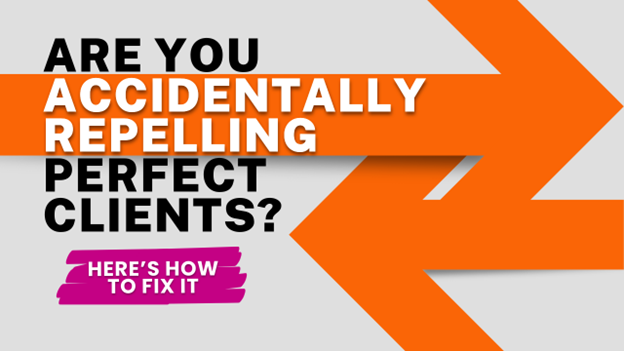
You've polished your website, perfected your elevator pitch, and your product or service genuinely solves real problems. Yet somehow, you keep attracting the wrong customers—the ones who haggle over every penny, make unreasonable demands, or disappear after one purchase. Meanwhile, your dream clients seem to float past, elusive, visiting but not buying. Why? As in any human relationship, you need to be more magnetic. If your answer is, “I’m trying,” then perhaps you’re creating the wrong kind of magnetic field around your brand. Opposites Don't Always Attract in Business Did you ever play with magnets? If you did, then you know magnets have two poles that create distinct fields of attraction and repulsion. Your business has something similar. Every decision you make, from your pricing strategy to your communication style, either attracts or repels specific types of customers. Most beginning businesspeople think success is about appealing to as many people as possible. Their marketing consists of claims like, “This is a great gift for everyone,” “This item fits everyone’s lifestyle.” But trying to appeal to everyone creates neutral magnetism that attracts no one strongly. Most customers don’t want to be everyone. They want to be spoken to in ways that catch their attention, such as “Creative architects love our tool,” or “We help people who hate doing yardwork get their weekend back.” Those types of callouts leave a potential customer thinking, “That’s me,” which inadvertently directs them to think, “That (product/service) is for me.” Speaking in Your Customer's Natural Wavelength Additionally, your ideal customers operate on distinct "business frequencies," that’s to say, patterns of decision-making, communication preferences, and value systems that are surprisingly predictable within industries and personality types. Most businesses broadcast on a "Generic FM"—bland, safe messaging that technically reaches everyone but resonates with no one. Your competition is probably doing the same thing, which is why customers can't tell you apart. Tuning Into the Right Station Let's say you run a marketing agency. Instead of saying "We help businesses grow," try identifying your ideal client's specific “frequency”: ● The Overwhelmed Entrepreneur: "For entrepreneurs who lie awake at 2 AM wondering why their great product isn't selling itself" ● The Scaling Company: "When your scrappy startup marketing tactics hit a wall at $2M revenue" ● The Corporate Escapee: "Marketing services for executives who fled corporate life and swore they'd never work with agencies that speak in buzzwords again" Each message repels two groups while magnetizing one and that's exactly what you want. Availability Affects Attraction Many small businesses are getting it backwards. They think being constantly available and accommodating makes them more attractive. In reality, it often signals low value and desperation, which is the business equivalent of appearing too eager on a first date. This doesn't mean you should be difficult to buy from. No one’s going to purchase from someone playing “hard to get.” It means understanding what behavioral economists call "perceived scarcity signals." These are subtle indicators that communicate value through selective availability. Examples of Strategic Scarcity ● A landscape architect who only takes on three projects per quarter (instead of cramming in as many as possible). You’ll often see this in marketing as “I just had a spot open up. Grab it now because I only have availability like this once a quarter.” ● A consultant who requires a discovery call before proposing. “Let’s jump on a call and see if we’re a good fit for one another.” ● A restaurant that closes one day per week "to maintain quality" (instead of staying open every day to maximize revenue). Chick-fil-a, enough said. These businesses repel price-sensitive, high-maintenance customers while attracting clients who associate selectivity with expertise. The Compound Interest of Customer Magnetism The most overlooked aspect of customer attraction is that it compounds over time if you maintain consistency and think about how every interaction either strengthens or weakens your magnetism. When you bend your standards, lower your prices, or compromise your values to accommodate a marginal customer (not your ideal customer), you don't just make that one transaction less profitable. You make it harder to attract ideal customers in the future. Conversely, every time you politely decline a poor-fit customer or maintain your standards despite pressure, you strengthen your brand. Word spreads through your ideal customer network that you're selective, professional, and worth the premium. The other part no one tells you about catering to someone other than your ideal audience is that it endangers your word-of-mouth marketing. Word-of-mouth or referrals are something every business wants because it’s one of the most powerful types of marketing. When you market to everyone, including those who are not a good fit for you, you attract the wrong kind of customers and what they say about you will either be negative or, if it’s positive, it will attract more people who are not an ideal fit. After all, most people hang out with people who are similar to them so if they’re referring people to you it will be more people who are not your target market. The Practical Magnetism Audit Want to identify if your business has weak magnetism? Ask yourself these questions: Attraction Audit: ● Do your last five new customers have similar characteristics, challenges, and values? ● Would your best customers enthusiastically recommend you to their friends? ● Do people often say "I never would have thought of that" when you explain your approach? Repulsion Audit: ● Can you clearly articulate who your service is NOT for? ● Do you regularly turn away inquiries that aren't a good fit? ● Would your worst customers give similar complaints about what they didn't like? If you answered no to most of these questions, you likely have neutral polarity—trying to be everything to everyone and ending up magnetic to no one. Rewiring Your Business Magnetic Field Start by identifying your strongest existing customer relationships. What specific problems do you solve for them that no one else addresses quite the same way? What do they value about working with you that they can't get elsewhere? That's your magnetic north. Then, gradually align everything—your messaging, pricing, processes, and even your office environment—to strengthen that specific part of your brand. Some customers will drift away. Let them. They're making room for the clients who will become your biggest advocates and most profitable relationships. Remember, in a world of infinite choice and constant noise, being remarkably good for some people is infinitely more valuable than being adequate for everyone. Your perfect customers are out there, searching for exactly what you offer. The businesses thriving today aren't necessarily the ones with the best products or the biggest marketing budgets. They're the ones that have figured out how to create a strong, focused magnetic field and their ideal customers can't help but be drawn in. That's not just good marketing. That's magnetic business design. ------------ Christina Metcalf is a writer and women’s speaker who believes in the power of story. She works with small businesses, chambers of commerce, and business professionals who want to make an impression and grow a loyal customer/member base. She is the author of The Glinda Principle , rediscovering the magic within. _______________________________________ Instagram: @christinametcalfauthor LinkedIn: @christinagsmith

Unless you've been living under a rock it's difficult to avoid all the posts about school starting back up again and summer being over. Why do those events matter? It means we're quickly approaching Q4 and that is the perfect time to review what has gone well for you this year and what has been a mounting challenge. While you may be laser-focused on holiday sales, year-end reports, and hitting those final quarterly goals, the savviest leaders know Q4 is also the time to zoom out. The decisions you make now don’t just impact your December and year end. They shape your success well into 2026. Business cycles move quickly. The economy, workforce, and technology will continue to shift in ways that reward businesses that plan ahead. Ready, Set, Go! Here’s how to get future-ready while everyone else is just trying to cross the 2025 finish line. Set Your Goals If you haven’t already done so, start by revisiting or creating a three-year strategy for your business. Businesses that thrive don’t just chase sales. They pursue a bigger vision. Use Q4 to review your long-term goals. Where do you want your company to be in 2026? Expanding into new markets? Adding product lines? Increasing automation? Achieving greater efficiency and cost savings? Write it down, get buy-in from the leadership team, and align next year’s goals with that north star. Break your vision into yearly milestones so it feels achievable, not overwhelming. When Strategy Stalls: 4 Moves to Regain Momentum ------------------- Invest in Movement Next, consider technology investments. AI, automation, and digital tools are having huge impacts on efficiency and cost-savings. If you wait until 2026 to get around to auditioning these “game changers,” you’ll be behind. Look at how technology can support your growth, through things like customer relationship management, e-commerce, or workflow automation. Starting small with a chatbot, productivity app, or scheduling tool today could free up enough resources to tackle bigger tech upgrades in 2026. 5 Genius Ways AI Can Stretch Your Existing Content AI for Small Businesses: Practical Steps to boost utility How Small Businesses Can Lead Innovation ---------------- Invest in People Your workforce also deserves attention. The talent pipeline is shifting, with Gen Z stepping into more roles and hybrid work remaining a hot topic. Businesses that build flexibility, invest in upskilling, and cultivate a strong culture now will have a competitive advantage in recruiting and retaining the right people. Additionally, add professional development to your 2026 budget. It’s one of the most powerful investments for long-term growth and employee satisfaction. If you can't afford professional development for your team, consider affordable solutions like what the chamber of commerce offers. Chamber member benefits cover all employees, which means they can attend the chamber events of their choosing and may be able to meet professional development goals through chamber trainings, webinars, and events. By bringing these opportunities to your employees’ attention you look like the rock star who's assisting them in their career pathing and knowledge attainment. The chamber may also have a mentor program that your employees can participate in. This can be a huge benefit for younger employees looking for guidance. Perks & Benefits Idea List – Available to Chamber Members The New Employee Benefit Everyone Is Talking About Recognition is Free—But It Might Be the Most Valuable Investment You Make The 2025-2026 Leadership Class is now accepting applications. Access here and return to: Office@LLChamber.com by September 15. --------- Check the Finances Financial resilience is another key to success. Interest rates, inflation, and shifting consumer habits make financial agility essential. Look at your cash flow, debt, and pricing strategies. What can you adjust now to weather uncertainty in the next two years? Diversifying revenue streams ensures your 2026 success isn’t dependent on one source of income. Money Management Tips for People Who Hate Money Management Get Ready! For Small Business Week Small Business Resource Round-up Mid Year reset ------------- Build Relationships Anticipating market shifts can also give you a competitive edge. Consumer values are evolving, especially around sustainability, health, and community. Businesses that align with these trends will have a competitive advantage. Pay attention to what your customers are asking for now. It’s often a preview of what will be standard in 2026. 5 Customer-Focused Strategies to Build Loyalty and Drive Growth Hospitality is the Hidden Edge: Why Emotional Connection Drives Customer Loyalty How to Build Loyalty Without Spending a Dime on Ads ------------------- Check-in with the Chamber Finally, strengthen your community and partnerships. No business succeeds in a vacuum. Your local chamber of commerce offers resources, advocacy, and connections that can give you a leg up in uncertain times. Don’t just look to network—collaborate. Joint promotions, shared talent pipelines, or advocacy efforts can open doors you couldn’t access alone. Q4 is the perfect time to step back, not just step up. By thinking beyond the immediate hustle and honing your business strategy, you’ll finish this year strong and ensure sustainable, future-ready growth in 2026 and beyond. 10 Ways to Get the Most from Your Chamber Membership How to Build Business Connections (Even If You Hate Networking) Local Business Partnerships Strengthen Communities, Drive Growth Your Chamber Listing Matters More Than Ever! -------------------- Looking for information on making your landing page better? Need technical assistance? Visit here! Looking for sponsorship/event hosting information? Complete this form to let us know what you’re interested in. ---------------------- Christina Metcalf is a writer and women’s speaker who believes in the power of story. She works with small businesses, chambers of commerce, and business professionals who want to make an impression and grow a loyal customer/member base. She is the author of The Glinda Principle , rediscovering the magic within. _______________________________________ Facebook: @tellyourstorygetemtalking Instagram: @christinametcalfauthor LinkedIn: @christinagsmith

Local sourcing brings speed, quality, and deeper connections. Being nearby means more control and faster problem-solving. Investing locally builds community goodwill and brand trust. Start small today—test one item with a local partner. 579 words ~ 3 min. read Sometimes the best way to grow your business isn’t about going bigger—it’s about going closer. More companies are finding that partnerships with local suppliers aren’t just about where products come from—they shape how quickly a business can move, how closely it can control quality, and how much value it can create for customers and community. Speed You Can See When your suppliers are nearby, orders arrive while the ink on your sales order is still drying. Questions get answered before lunch. Product tweaks happen in days, not months. That kind of responsiveness means you can serve customers better and seize opportunities while they’re still fresh. A Front-Row Seat to Quality Working locally lets you see the process up close. You can step onto the production floor, smell the freshly cut materials, and shake hands with the people bringing your products to life. This connection makes it easier to uphold high standards, solve issues before they snowball, and create offerings you’re proud to stand behind. Partnerships That Feel Personal Local sourcing often turns into more than a transaction—it becomes a relationship. When your vendor is a short drive away, you’re not just an invoice; you’re a partner. That trust leads to creative solutions, extra care during busy seasons, and a shared investment in each other’s success. An Investment in Your Community Dollars spent locally ripple outward—supporting jobs, other small businesses, and local services. Customers notice when you make that choice, and it often strengthens loyalty. People like to buy from businesses that invest where they live, and they remember it. A Story Worth Sharing More customers want to know where their purchases come from. Being able to say, “We work with suppliers right here in our region,” isn’t just a point of pride—it’s a story people tell each other, and it builds trust faster than any marketing campaign. Your First Step Making the shift doesn’t have to mean rewriting your whole supply chain. This week, pull up your purchase list and choose one product or service to source locally. Make a call, ask a few questions, and see how quickly a handshake can turn into a partnership. Once you’ve tested the waters, you can decide where else local sourcing fits. The Bottom Line Local sourcing is about more than cutting costs—it’s about speed, quality, trust, and connection. It helps you deliver faster, control outcomes better, and strengthen your brand’s story. Global trade can move mountains, but local sourcing moves at the speed of trust—and that’s the kind of supply chain that lasts. Read More: 5 Advantages to Localizing Your Supply Chain Local Business Partnerships Strengthen Communities and Drive Growth --- The Leavenworth-Lansing Area Chamber of Commerce is a private non-profit organization that aims to support the growth and development of local businesses and our regional economy. We strive to create content that not only educates but also fosters a sense of connection and collaboration among our readers. Join us as we explore topics such as economic development, networking opportunities, upcoming events, and success stories from our vibrant community. Our resources provide insights, advice, and news that are relevant to business owners, entrepreneurs, and community members alike. The Chamber has been granted license to publish this content provided by Chamber Today, a service of ChamberThink Strategies LLC.

If the thought of “tracking KPIs” makes your eyes glaze over, you’re not alone. For many small business owners, Key Performance Indicators (KPIs) sound like something reserved for corporations with big budgets, bigger teams, and even bigger Excel spreadsheets. Who wants the hassle? But here’s the truth: KPIs are just numbers that tell a story and if you’re not paying attention to them, you’re running your business with the lights off. The good news? You don’t need 47 dashboards or a data analyst to track the KPIs that matter. You just need to choose a few that tell you whether you’re growing, stalling, or unknowingly throwing money out the window. Consider this article a crash course on basic KPIs. KPIs You Should Be Tracking If you’re like most businesses that are just beginning their financial tracking and analysis you’re concentrating on two things—what did I make and how much did I spend? That’s a great start but it’s a lot more nuanced than that. If you’re ready to play in the big leagues but aren’t ready to hire your own analyst, here are 5 simple KPIs you should track (and you don’t need a business degree to do so): 1. Customer Acquisition Cost (CAC) What it is: How much it costs you to get a new customer. Why it matters: If you’re spending $100 to get a $50 sale, that’s not marketing—it’s expensive gambling. How to track it: Divide your total marketing + sales costs by the number of new customers gained in that period. Example: $1,000 spent / 10 new customers = $100 CAC Pro tip: Keep an eye on every month. If it’s creeping up, your ads, outreach, or messaging may need a tweak. 2. Customer Lifetime Value (CLV) What it is: The total revenue a single customer brings to your business over the course of your relationship with them. Why it matters: It’s not the first sale that makes you profitable—it’s the second, third, and fifteenth. How to track it: Average purchase value x number of purchases x average customer lifespan. When CLV > CAC = happy business owner. 3. Lead-to-Customer Conversion Rate What it is: The percentage of leads that turn into actual customers. Why it matters: Getting leads is great. Very exciting when someone shows interest in you but converting them is where the money happens. How to track it: (Number of new customers ÷ number of leads) x 100 Example: 10 customers ÷ 100 leads = 10% conversion rate Pro tip: If this number is low, your follow-up process or sales messaging might need work. 4. Revenue per Employee (or per Hour) What it is: A productivity metric that shows how efficient you or your team really are. It’s not about being busy, it’s about what you’re/they’re adding to the bottom line. Why it matters: Working hard is great but seeing results from that work is critical to your business’ success. For instance, imagine one employee having a laundry list of work accomplished over 40 hours but no sales to show for it or an employee working three hours and making the week’s sales number. Which employee is more valuable? How to track it: Total revenue ÷ number of employees (or hours worked, if you’re a solo act). This outcome calculates it in a general sense. If you want to figure out which employee is bringing in more revenue, you will have to create a system to assign sales to individual employees. Some PoS systems allow for codes, for instance, while most CRMs allow you to assign clients to salespeople. This calculation helps you see if you’re scaling well or just staying busy. 5. Churn Rate (a.k.a. Goodbye Rate) What it is: The percentage of customers who stop buying from you over a given period. Why it matters: A leaky bucket never fills, no matter how much water you pour in. How to track it: (Customers lost ÷ total customers at the start of the period) x 100 If this number is high, focus on customer experience, retention, and loyalty programs . Tracking Tips You don’t need to check these KPIs every day. Just set aside one hour a month to review them. Use a simple spreadsheet or dashboard, and ask: What’s improving? What’s declining? What actions should I take based on this? If you’re not sure what the trends mean, try plugging them into the AI of your choosing and ask it to run a basic analysis of the numbers and offer suggestions. KPIs aren’t just vanity metrics—they’re your early warning system, your gut check, and your business GPS. Track them consistently, and you’ll be more attuned to your businesses and where it’s headed. Further Reading: 6 Questions Every Smart Small Business Owner Asks Community-Led Growth: The Secret Sauce Smart Businesses Are Using to Scale Hospitality is the Hidden Edge: Why Emotional Connection Drives Customer Loyalty Think Bigger: How Systems Thinking Gives Small Business Owners a Smarter Edge -------------- Christina Metcalf is a writer and women’s speaker who believes in the power of story. She works with small businesses, chambers of commerce, and business professionals who want to make an impression and grow a loyal customer/member base. She is the author of The Glinda Principle , rediscovering the magic within. _______________________________________ Facebook: @tellyourstorygetemtalking Instagram: @christinametcalfauthor LinkedIn: @christinagsmith
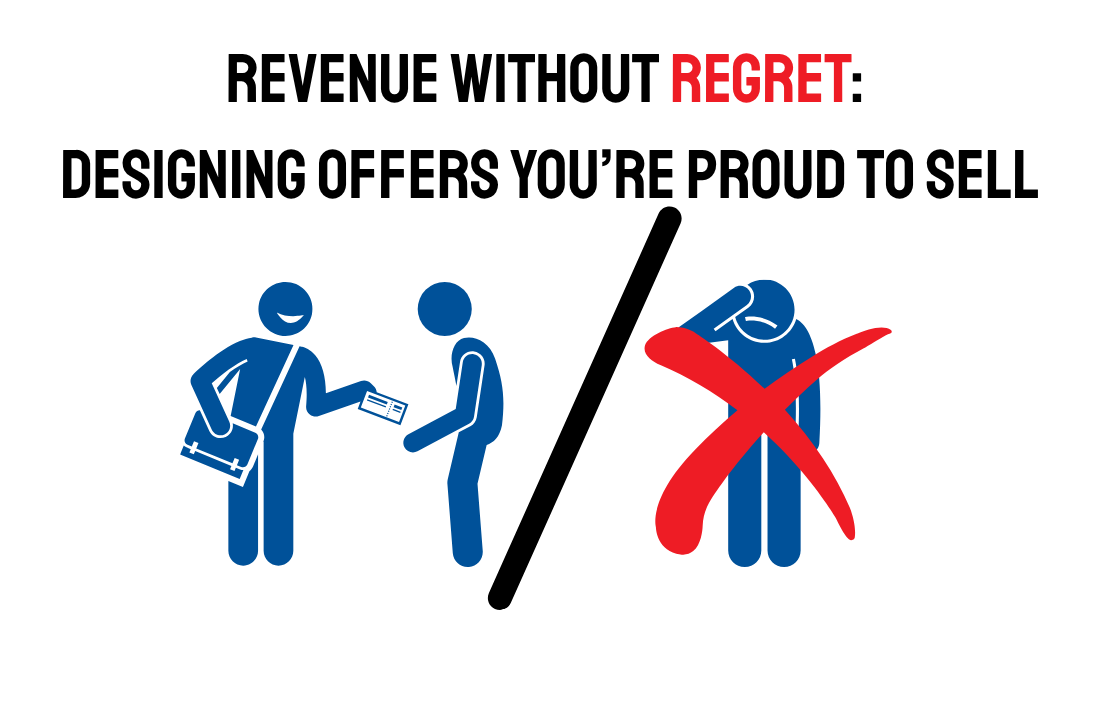
Growth shouldn’t come at the cost of trust. Your best offers align with your values. Ethical, high-value offers strengthen customer loyalty and long-term revenue. The best sales strategy? Solving real problems for the right people, not selling everything to everyone. Design offers you would recommend to your best friend. That is the standard for lasting success. 580 words ~ 3 min. read Revenue and reputation are deeply linked. Too many businesses chase short-term gains at the expense of long-term trust. The most successful leaders understand that growth built on misaligned offers, services or products that don’t truly serve customers, eventually backfires. Customers can sense when a business values sales over solutions, and trust once lost is nearly impossible to rebuild. Building offers you’re proud to sell means aligning profit with purpose. When you design services or products that genuinely solve problems for the people you serve, you not only drive revenue but also strengthen your brand’s credibility. Customers who feel understood and respected are far more likely to become repeat buyers, refer others, and advocate for your business. The Alignment Test A simple way to evaluate your offers is to ask yourself: Would I feel good recommending this to a friend or family member? If the answer is not a confident yes, it is time to revisit the structure, pricing, or positioning of your offer. Too many businesses overpromise, underdeliver, or add features customers don’t need just to justify higher prices. Instead, focus on creating offers that feel authentic, provide clear value, and are priced fairly for the transformation they deliver. Trust as a Growth Strategy Trust is more than a feel-good value. It is a competitive advantage. In markets crowded with choices, customers gravitate to businesses they believe in. That belief is earned when your offers consistently match or exceed expectations. Transparent pricing, honest marketing, and realistic promises are not just ethical. They are smart business. A disappointed customer might never complain to you, but they will share their experience with others. On the other hand, customers who trust you often become your strongest advocates. Word-of-mouth referrals remain one of the most powerful growth drivers, and they only happen when people feel good about recommending you. Designing High-Value, Ethical Offers Ethical selling does not mean undercharging or shying away from profit. In fact, premium pricing can be part of an ethical business strategy when your offer delivers exceptional value. The key is clarity. Communicate exactly what customers will receive, who it is best suited for, and how it will solve their problem. Businesses should regularly evaluate offers against three questions: Does this solve a real problem for my ideal customer? Does the price reflect both the value delivered and the effort required? Would I feel proud to stand behind this publicly and privately? If the answer is yes to all three, you are on solid ground. The Bottom Line Revenue without regret is possible when you align what you sell with what you believe. Ethical, customer-focused offers build trust, deepen loyalty, and generate long-term profitability. The strongest businesses are not just chasing sales. They are building relationships, and that is the kind of growth that lasts. --- The Leavenworth-Lansing Area Chamber of Commerce is a private non-profit organization that aims to support the growth and development of local businesses and our regional economy. We strive to create content that not only educates but also fosters a sense of connection and collaboration among our readers. Join us as we explore topics such as economic development, networking opportunities, upcoming events, and success stories from our vibrant community. Our resources provide insights, advice, and news that are relevant to business owners, entrepreneurs, and community members alike. The Chamber has been granted license to publish this content provided by Chamber Today, a service of ChamberThink Strategies LLC.
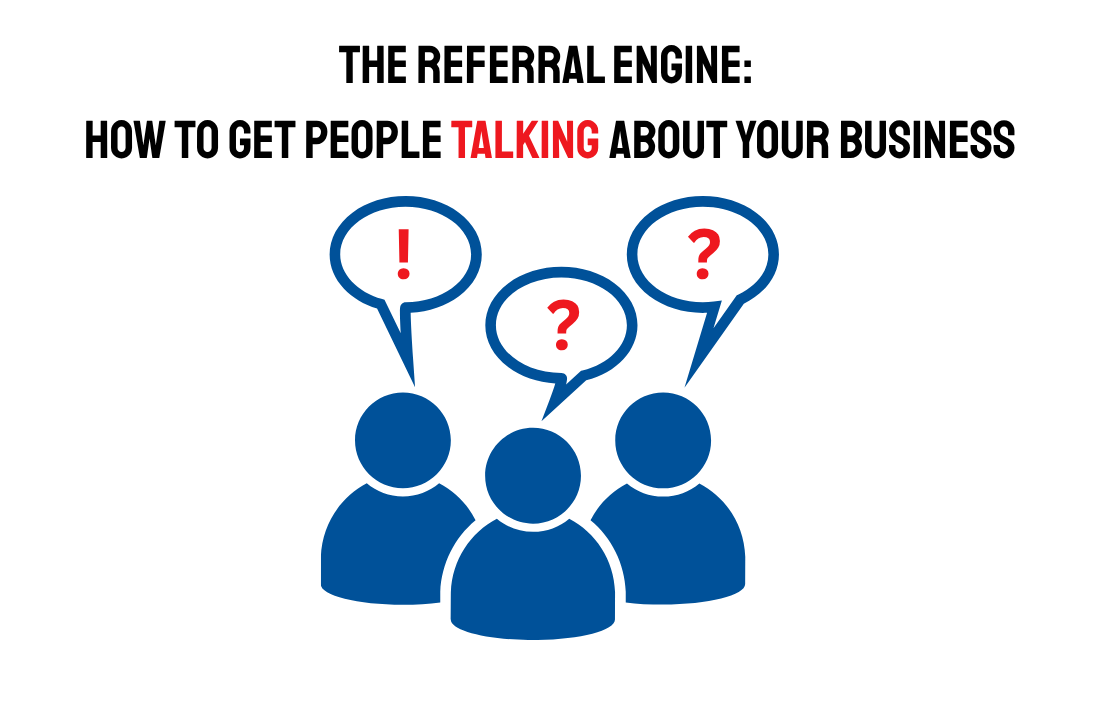
People talk about businesses that surprise them in a good way. Loyal customers are like neighbors who recommend a great mechanic. Employees are key to creating those “wow” moments customers share. Make referring you so easy that customers barely have to think about it. A great referral system grows like a garden when you plant the right seeds. 642 words ~ 3.5 min. read The best marketing doesn’t feel like marketing at all. It feels like a friend saying, “You’ve got to try this place.” Think about it. The last time you tried a new mechanic, plumber, or hair stylist, did you pick it because of an ad, or because someone you trust recommended it? That is the power of referrals. In his book *The Referral Engine: Teaching Your Business to Market Itself*, John Jantsch says referrals aren’t random. They happen when you build a business people love to talk about, treat loyal customers like VIPs, and make it easy for them to share your name. And there’s one more piece many businesses overlook—your employees play a huge role in creating experiences worth recommending. Give People a Story Worth Sharing Imagine taking your car to two different repair shops. One fixes the problem and hands you the bill. The other vacuums the interior, leaves a thank-you note on the dashboard, and calls you a week later to make sure everything is running smoothly. Which one are you more likely to recommend to a neighbor? People don’t talk about “fine” or “good.” They talk about moments that feel special. A “referable” business goes beyond getting the job done. It creates small surprises that make customers feel cared for. That might mean following up after a service, adding a handwritten thank-you note to an order, or solving a problem before the customer even asks. Ask yourself this: if a customer told a friend about us, what story would they tell? If you can’t answer that clearly, start there. Treat Loyal Customers Like Friends, Not Transactions Referrals don’t come from strangers. They come from people who feel connected to your business. Think about how you recommend a great mechanic to friends. You do it because you trust them and want your friends to have the same good experience. Your customers feel the same way when they feel valued. Discounts are nice, but loyalty is built on connection. Send thank-you notes. Offer early access to new products. Give your regular customers the first look at something new. These little touches make customers feel like insiders, and people love sharing things that make them feel “in the know.” Empowering Employees to Drive Referrals Employees are the ones delivering most of those referral-worthy moments, which means they need to be motivated to create them. If customers are the voice of your referral engine, employees are the spark that gets it going. Think about inviting friends to your home. You make sure everything looks great because it’s *your* place, and you take pride in it. Employees feel the same way when they feel ownership of the customer experience. Share success stories with your team, ask for their ideas, and celebrate when they create “wow” moments. Recognition matters. People work harder when their effort is noticed. Instead of only rewarding sales, reward the behaviors that lead to referrals. Create a “Wow Moment” board where employees share stories of times they went above and beyond. Give a small prize for the best story each week or month. Make recognition personal too. A quick shout-out in a team meeting or a handwritten thank-you from a manager can motivate more than a generic “good job.” Finally, tie incentives to referrals themselves. Track who customers mention when they leave reviews or refer friends. Reward employees who get named. A monthly prize for “most mentioned in customer referrals” turns great service into a fun challenge. When employees feel proud of the experience they deliver, they create moments customers can’t wait to share. Make Referrals Effortless Even the happiest customers won’t talk about you if it feels like work. Think about how you share a funny video. You click a button, and it’s done. Referring your business should feel just as easy. Give customers simple tools. That might be a shareable link, a short message they can copy and paste, or a quick way to send your information to a friend. If they have to search for your website or figure out what to say, most won’t bother. The Bottom Line Think of referrals like planting a garden. A great experience is the seed. Loyal customers are the water that keeps it growing. Engaged employees are the roots that hold it all together. And making referrals simple is the sunshine that helps it bloom. If you want people to talk about you, give them something worth talking about. Treat customers like friends, empower employees to create moments worth sharing, and make referring you feel as easy as sharing a favorite song. Do that, and you’ll build a business that grows every time someone says, “You’ve got to try this.” --- The Leavenworth-Lansing Area Chamber of Commerce is a private non-profit organization that aims to support the growth and development of local businesses and our regional economy. We strive to create content that not only educates but also fosters a sense of connection and collaboration among our readers. Join us as we explore topics such as economic development, networking opportunities, upcoming events, and success stories from our vibrant community. Our resources provide insights, advice, and news that are relevant to business owners, entrepreneurs, and community members alike. The Chamber has been granted license to publish this content provided by Chamber Today, a service of ChamberThink Strategies LLC.
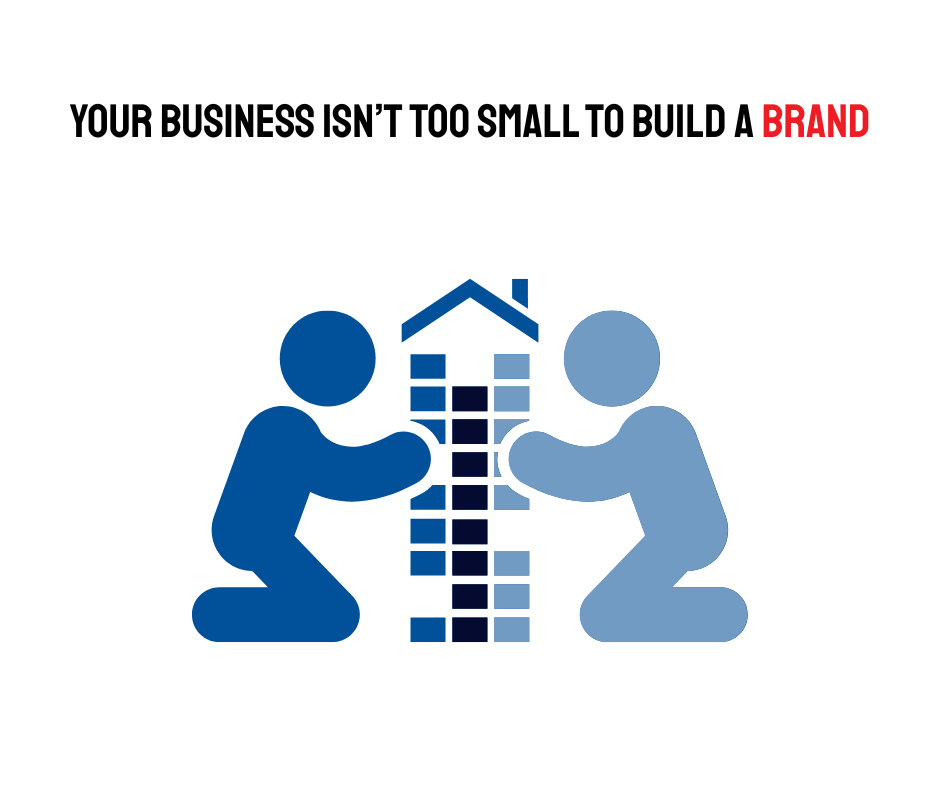
Branding isn’t about size. It’s about clarity, consistency, and purpose. Small businesses with strong brands grow faster and retain more loyal customers. A brand is the promise you keep, not just the logo you use. Start with your story and values. Then build visual and verbal consistency. Every customer interaction should reinforce what makes you different. 636 Words ~ 3.5 min. read When most people think “brand,” they picture big names like Nike, Apple, or Starbucks. But in truth, some of the strongest brands belong to small businesses. Like the neighborhood bakery with a line out the door every Saturday. Or the local contractor everyone recommends without hesitation. What sets them apart isn’t budget. It’s branding done right. Branding isn’t just for big companies. It’s how any business, of any size, communicates who they are and why they matter. For small businesses, branding isn’t a luxury. It’s your edge. It helps you cut through noise, attract better-fit customers, and grow with confidence. Yet too often, small business owners treat branding as something they’ll invest in later. That’s a missed opportunity. A strong brand isn’t about fancy design or a clever tagline. It’s about clarity and consistency. It’s the promise you make and keep every time a customer interacts with your business. When done well, branding builds trust, emotional connection, and long-term loyalty. That’s true whether you’re running a restaurant, a retail shop, or a B2B service company. So where should a small business start? Not with a costly rebrand or an elaborate style guide. Begin with your story. Why did you start this business? What do you believe in? What do you do better than anyone else? Those answers are the foundation of your brand identity. Next, translate that identity into a voice and look that feel authentic to you. Choose a tone that fits your values. Whether that’s professional, casual, inspiring, or direct. Then use it across every customer touchpoint. One local accounting firm embraced a tone of friendly expertise in everything from its emails to signage and saw referrals rise 30 percent in a year. Your visuals matter too. You don’t need a world-class designer. Start with a few key colors, a clean font, and a logo that aligns with your message. What matters more than polish is consistency. Make sure your website, signage, social media, and printed materials all feel like they’re coming from the same voice and visual identity. And most importantly, bring your brand to life in how you deliver your service. Your customer experience should reflect your values in action. If your brand is about reliability, you need fast response times and follow-through. If it’s about community, you should be engaging locally and making people feel seen. Small businesses that get branding right build something bigger than marketing. They build reputation. They become memorable, trusted, and easier to recommend. A strong brand turns customers into advocates and consistency into growth. The Bottom Line: Branding isn’t about budget or business size. It’s about being clear on your purpose, consistent in your message, and authentic in how you show up. Take ten minutes today to write down what you stand for. That’s the first step to building a brand that lasts. Further Reading: Unleashing Your Brand's Personality in the Age of AI --- The Leavenworth-Lansing Area Chamber of Commerce is a private non-profit organization that aims to support the growth and development of local businesses and our regional economy. We strive to create content that not only educates but also fosters a sense of connection and collaboration among our readers. Join us as we explore topics such as economic development, networking opportunities, upcoming events, and success stories from our vibrant community. Our resources provide insights, advice, and news that are relevant to business owners, entrepreneurs, and community members alike. The Chamber has been granted license to publish this content provided by Chamber Today, a service of ChamberThink Strategies LLC.

If you’re constantly putting out fires in your business, you might be treating symptoms instead of fixing systems. Systems thinking helps you connect the dots across hiring, sales, customer service, and operations. It’s not theory. It’s a practical mindset that builds efficiency, resilience, and smarter decision-making. Small business owners who think in systems avoid waste, anticipate problems, and lead with greater clarity. 604 Words ~ 3 min. read Ever fix a leaky pipe only to find another bursts a few days later? Running a business without systems thinking is like that. Every fix creates new problems because nothing in your business operates in isolation. Everything is connected. That is why systems thinking matters. Once used primarily by scientists and large corporations, it is now a strategic advantage for small business owners who want to stop reacting and start leading with clarity and purpose. What Is Systems Thinking? Systems thinking is a problem-solving approach that looks at the full picture, not just individual components. It focuses on how different functions, teams, and processes interact, and how those relationships create patterns over time. For example, if sales are falling, it is easy to blame the sales team. But a systems thinker goes deeper. Is marketing reaching the right audience? Are order delays impacting customer experience? Are internal goals misaligned? This mindset addresses root causes rather than surface issues. It gives leaders insight that leads to sustainable improvements. A Real-World Win Consider a local bakery that saw repeat business begin to dip. The owner initially considered staff retraining but instead decided to map the entire customer journey. She discovered supply chain delays were increasing wait times during peak hours, which frustrated customers. By adjusting vendor relationships and revising inventory practices, she sped up service and brought customers back. This is systems thinking in action. Why Small Businesses Need It Smaller businesses operate with tighter resources and greater exposure to risk. One decision can impact multiple areas at once. That is why systems thinking helps owners lead more effectively. It provides structure for understanding cause and effect throughout the business. Here’s how it supports growth: Efficiency: Uncover root issues in operations rather than solving isolated problems. Smarter decisions: Detect recurring patterns and fix their source, not just the outcome. Foresight: Recognize how changes in one area will impact the entire organization. How to Get Started You do not need a formal system or software to begin. Use these simple steps: Sketch your system. Create a visual map of how departments, people, tools, and customers interact. Identify feedback loops. Look for areas where problems tend to repeat or compound. Ask deeper questions. Move from “What went wrong?” to “What in our structure caused this result?” Review regularly. Set time aside monthly to assess how recent changes are impacting other parts of the business. Free tools like Lucidchart or Miro can help you visualize your system. For more advanced insights, explore Harvard Business Review and MIT Sloan Management Review . The Bottom Line Systems thinking gives small business leaders the perspective needed to lead with confidence, not just react to chaos. It connects the dots between actions and outcomes, so you can fix what really matters. The most effective business owners think in systems. They see how each decision shapes the whole. That is what helps them grow stronger, faster, and more sustainably. --- The Leavenworth-Lansing Area Chamber of Commerce is a private non-profit organization that aims to support the growth and development of local businesses and our regional economy. We strive to create content that not only educates but also fosters a sense of connection and collaboration among our readers. Join us as we explore topics such as economic development, networking opportunities, upcoming events, and success stories from our vibrant community. Our resources provide insights, advice, and news that are relevant to business owners, entrepreneurs, and community members alike. The Chamber has been granted license to publish this content provided by Chamber Today, a service of ChamberThink Strategies LLC.
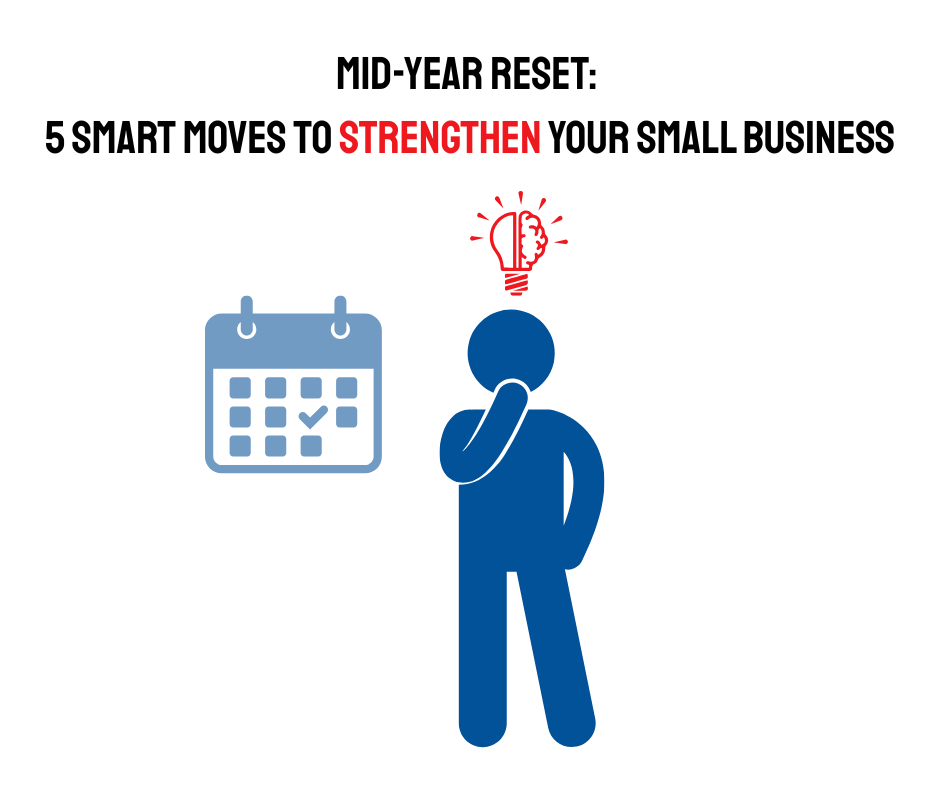
The year's midpoint is your wake-up call—refocus now to finish strong. Scrutinize your numbers to find what’s working (and what’s not). Reboot your marketing before seasonal shifts hit. Remove workflow roadblocks to boost team output. Reconnect with your business’s core purpose. 597 Words ~ 3 minute read The midpoint of the year often hits like a reality check: goals half-met, momentum lagging, and a to-do list that keeps growing. But this moment is also a strategic gift: a reset button that can set you up for a stronger, smarter second half. Here are five high-impact moves to help you reset with intention and finish the year with confidence: 1. Run the Numbers, Then Rewrite the Playbook Take a hard look at your financials. Are you ahead, behind, or coasting? Scrutinize revenue trends, margins, and expenses. Identify what’s draining resources and double down on what’s driving growth. Use the insights to reshape your financial strategy for the next six months, because winging it isn’t a plan. 2. Reboot Your Marketing Before the Fall Rush If your marketing has lost steam, this is your window to revive it. Launch a seasonal promotion, refine your messaging, or test new channels to re-engage your audience. And don’t wait to prep for fall. Holiday planning starts now. Review your content calendar, track past performance, and align campaigns with your business goals. 3. Clear the Roadblocks Slowing Your Team Small inefficiencies become big headaches by year’s end. What processes are wasting time? Where’s the communication breaking down? Invite your team to flag friction points and co-create solutions. Even modest upgrades, such as automating reports, streamlining meetings and clarifying roles, can drive major gains. Harvard Business Review explores how better collaboration fuels better outcomes. 4. Recalibrate Your Goals and Reset Priorities It’s okay if the goals you set in January don’t fit anymore. Priorities evolve. What matters is focus. Reassess your KPIs and trim anything that’s distracting from your top objectives. Reset your team’s focus around fewer, clearer targets so execution becomes simpler and more powerful. 5. Reconnect with Your Why Amid the grind, your original mission can get blurry. Take a step back to reflect: Why did you start this business? Who do you serve, and how do you want to show up for them? Realigning with your purpose energizes your leadership and clarifies your brand. Fast Company outlines how reconnecting to your “why” boosts both engagement and performance. Bottom Line: A mid-year reset isn’t just a productivity hack, it’s a strategic imperative. It gives you space to pause, zoom out, and ask the critical questions that get lost in day-to-day urgency. By evaluating your numbers, refreshing your marketing, streamlining operations, focusing your goals, and reigniting your purpose, you give your business the fuel it needs to finish the year not just intact, but thriving. This isn’t about doing more; it’s about doing what matters most with greater clarity, consistency, and conviction. --- The Leavenworth-Lansing Area Chamber of Commerce is a private non-profit organization that aims to support the growth and development of local businesses and our regional economy. We strive to create content that not only educates but also fosters a sense of connection and collaboration among our readers. Join us as we explore topics such as economic development, networking opportunities, upcoming events, and success stories from our vibrant community. Our resources provide insights, advice, and news that are relevant to business owners, entrepreneurs, and community members alike. The Chamber has been granted license to publish this content provided by Chamber Today, a service of ChamberThink Strategies LLC.
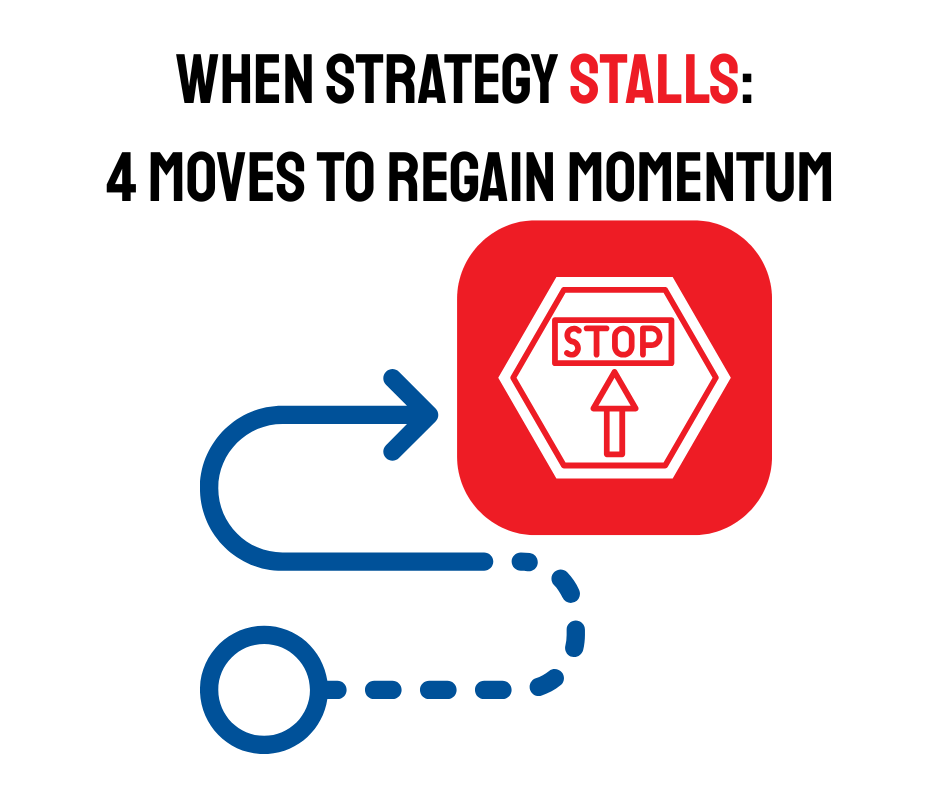
Pause to Stabilize: Cut costs and renegotiate to create breathing room. Pivot, Don’t Panic: Explore new markets or customer segments while staying agile. Learn Fast or Fall Behind: Turn setbacks into insights through rapid experimentation. Guard the Downside: Hedge risks and protect what matters most. 600 words ~ 3 min. read Even seasoned leaders know the sting of a strategy that’s no longer working. But the real measure of leadership isn’t avoiding failure—it’s how decisively and creatively you pivot when the path ahead shifts. When strategic plans falter—whether due to market turbulence, internal missteps, or external shocks—leaders must act not with panic, but with precision. Drawing from Harvard Business Review’s “How to Rescue a Failing Strategy,” here are four pivotal moves to help regain strategic traction. 1. Pause to Stabilize If your strategy is wobbling, the first priority is to buy time without triggering chaos. Consider: Reducing burn rate by cutting non-essential expenses Freezing expansion plans that strain resources Renegotiating contracts or vendor terms to ease cash flow Retailers, for instance, might pause new store openings to refocus on e-commerce logistics. Nonprofits may temporarily halt new program rollouts to concentrate on core impact areas. This strategic pause buys clarity—and the space to think critically. 2. Pivot, Don’t Panic Locking into one approach can be dangerous when conditions change. Instead, design options: Enter adjacent customer segments Test low-risk partnerships or distribution channels Pilot tweaks to product offerings or delivery models For manufacturers, this might mean adapting existing equipment to serve a neighboring industry. Professional services firms could pivot to virtual delivery or a subscription-based model. Related reading: McKinsey on adaptive strategies 3. Learn Fast or Fall Behind Use turbulence as a catalyst to turn your organization into a fast learner. That means: Running controlled experiments on pricing, offers, or ops Creating real-time feedback loops from customers and staff Making strategic reviews more iterative, less static Construction firms might beta-test prefab components for speed and cost. Tech startups could A/B test UX changes weekly. Also worth reading: Bain on learning organizations 4. Guard the Downside Pivots come with risk. Your job? Minimize exposure while staying bold. Cap investments in unproven ideas Increase controls around key financial or operational processes Develop contingency plans for likely risk scenarios Think of this as smart aggression—pushing forward without leaving your core vulnerable. Bottom Line Every organization will face moments when strategy falters. The difference lies in the response. Leaders who act with focus—stabilizing, experimenting, and protecting—don’t just recover; they reposition for smarter, stronger growth. --- The Leavenworth-Lansing Area Chamber of Commerce is a private non-profit organization that aims to support the growth and development of local businesses and our regional economy. We strive to create content that not only educates but also fosters a sense of connection and collaboration among our readers. Join us as we explore topics such as economic development, networking opportunities, upcoming events, and success stories from our vibrant community. Our resources provide insights, advice, and news that are relevant to business owners, entrepreneurs, and community members alike. The Chamber has been granted license to publish this content provided by Chamber Today, a service of ChamberThink Strategies LLC.

